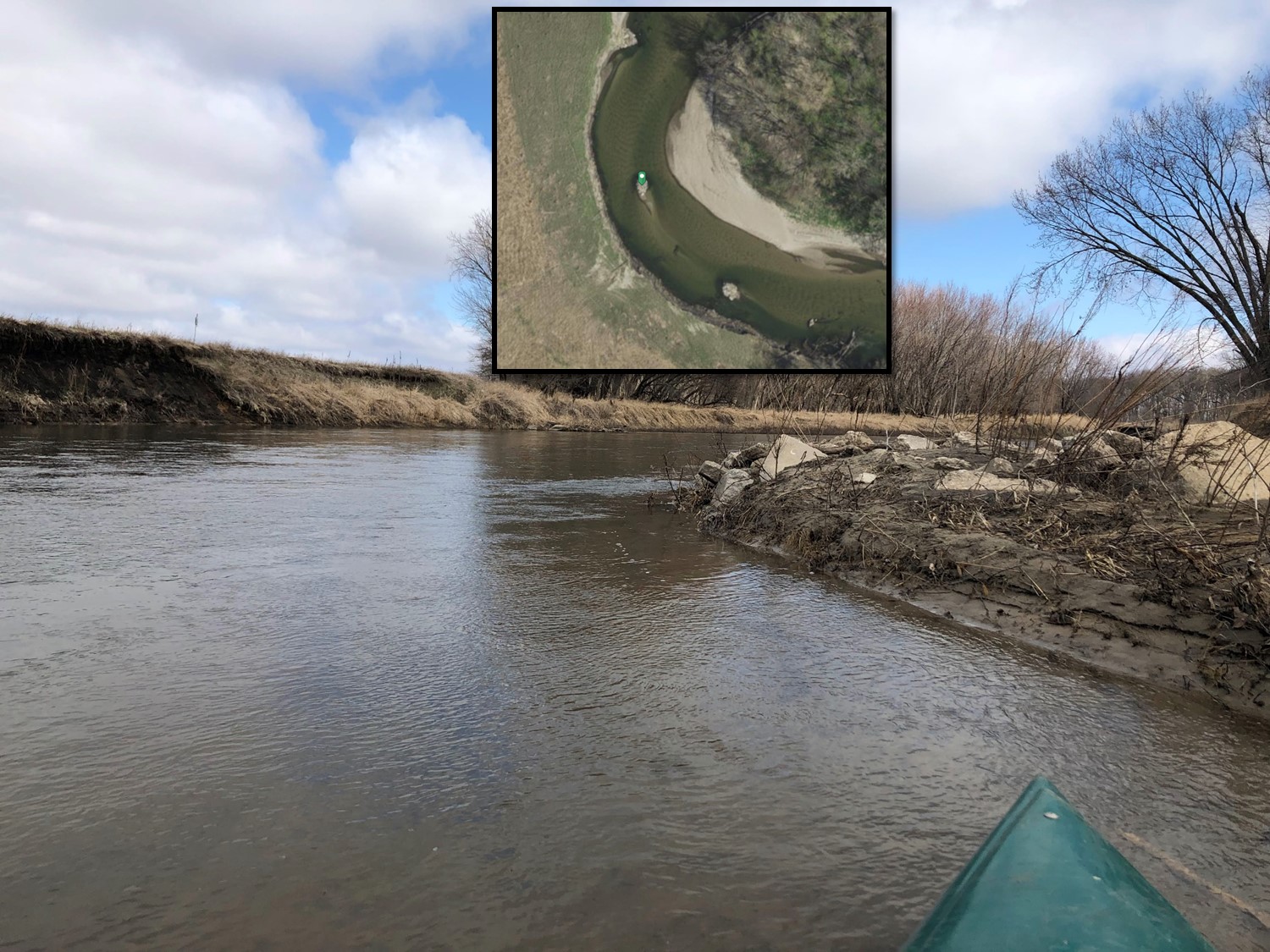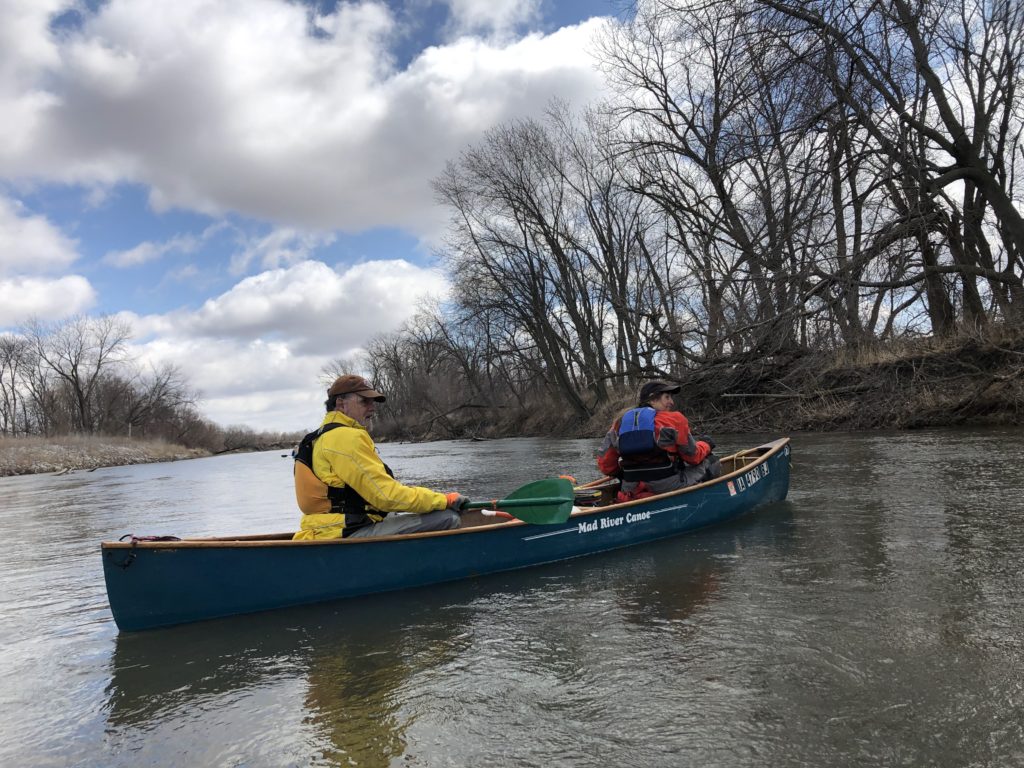This island in the middle of the South Skunk River used to be riprap armoring the outside bend. (I turned my kayak upstream to take this photo). Rick Dietz pointed this out to me during the Skunk River Paddlers’ annual “Pancake Paddle” on April 2. Five of us bundled up and enjoyed canoeing and kayaking from South 16th St in Ames to Askew Access near Cambridge. Back at the office, I looked at some aerial photos. The riprap near Ken Merrill Road must have been installed some time in the ’90s, but by 2009, the concrete had slumped to the bottom of the channel and the river had started carving away the bank behind it.
The Skunk River south of Ames reflects an old attitude toward rivers. We straightened the bends in the river, which made the water go faster. The faster current caused banks to cave in, so we dumped concrete (and sometimes old cars) on the banks to armor it. This didn’t always work. Hopefully we’ve learned something from these failures and are exploring how to manage rivers by working with nature: this can include setting aside floodplain areas to allow rivers to meander, using stumps and rock structures to redirect the current away from unstable banks, reshaping the channel so that the river can overtop its banks and dissipate its energy without causing property damage, and protecting the banks with a mix of rocks and native vegetation. Riprap and levees should be used sparingly.
As for the paddling, the water was cold, so water proof gear and dry bags are a must, but early spring on the Skunk is a great time to see birds. We saw several flocks of mergansers, wood ducks, a yellowlegs, bald eagles, and herons. We’ve got some nice water trails in Iowa, so take advantage!



